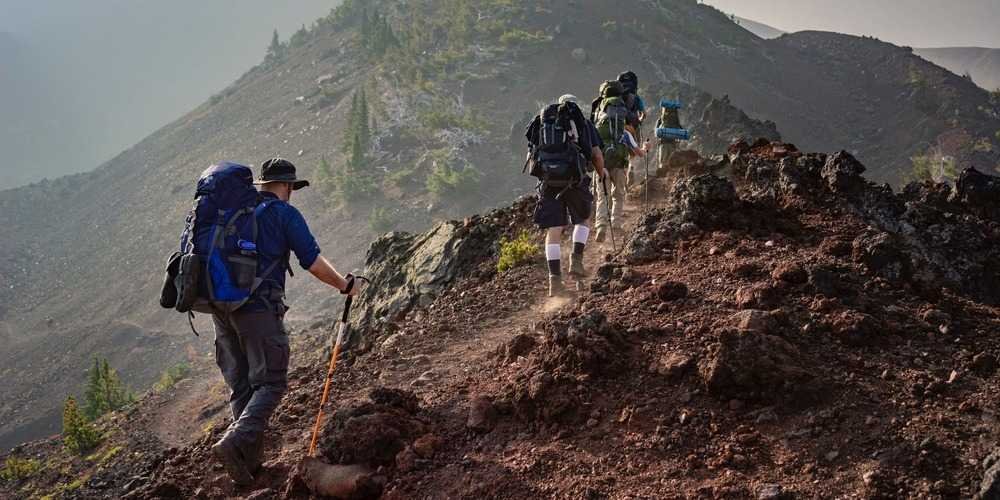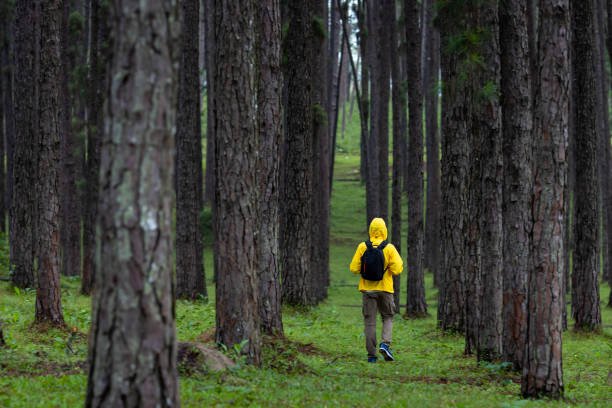
About Adventure Therapy
Perhaps the question that workers or researchers engaged in psychotherapy and counseling want to know most is “what type of treatment is performed by what kind of people, and under what circumstances, will it be used for cases with certain special problems?” What treatment, by whom, is most effective for this individual with that specific problem, and under which set of circumstances. Whether patients can be helped in a timely manner is a concern for psychotherapy and counseling workers, and treatment methods have also ranged from traditional psychological analysis to family and even recent narrative therapy. However, some scholars have begun to combine adventure education and therapy to study. Regarding the effectiveness of adventure therapy, relevant foreign literature also shows that adventure therapy is indeed beneficial to individual cases.
Adventure therapy has recently been promoted by some non-profit organizations (such as Urbanist Foundation, Feiyang Youth Center, etc.). Although the goal of the activity is not treatment, the obvious changes in the teenagers during and after the activity have made it so The field of adventure therapy is gradually being understood, and I hope it can be used to help more cases and give new hope to more counselors engaged in youth-related work.
The application of traditional oral counseling to teenagers has gradually faced a bottleneck. Some teenagers only deal with counselors or psychologists. It is difficult to clearly evaluate whether it is effective for a case and how long the effect will last. Therefore, more and more people It is hoped that the adventure therapy model can be used in adolescents, children and parent-child family relationships. Relevant research has proven that it has significant effects. Abroad, currently under the promotion of the Therapeutic Adventure Professional Group (TAPG), this field has grown significantly in theory, research, evaluation and practice.
The theoretical background of adventure therapy
The theoretical basis of adventure therapy is experiential education “reflective learning through participation”, because experiential education emphasizes learning from specific experiences. In the process, cognitive, emotional, social, sensory and spiritual involvement of the whole person makes learning more Ability to internalize. In experiential education, individuals are placed in real situations and must take some real actions and actively participate. Learners can complete challenging tasks in the environment during experiential activities, and then be able to self-aware and accept themselves. .
According to the philosophy of experiential education, Gass (1993) proposed the following principles to meet the definition of adventure therapy:
- The patient is a participant rather than a bystander in the treatment process.
- The patient must be motivated during treatment activities, such as in the form of vitality, involvement and responsibility.
- The therapeutic activities are real and meaningful and can have a natural impact on the case.
- Reflection is an important condition in the treatment process.
- Functional changes must be relevant to the present and future of the case and its society.

Adventure therapy
“Adventure” must be consistent with uncertainty, risk challenges and imbalances (Priest, 1990a), and adventure therapy is a treatment model that uses the therapeutic effects of adventure experiences and activities, combined with some traditional treatment models, through the therapist’s pre-activity. Evaluate cases, design activities, and intentionally intervene to lead the cases to challenge themselves. Because of the self-challenge, they learn some things and concepts about themselves. The cases need to complete the tasks, but they also have to face some negative feelings, such as excessive dependency, learned helplessness, etc., and a deeper understanding of oneself in success and setbacks; but through guidance, the sense of success and control will be enhanced, and it will be more able to help change behavior
(Herebert, 1996). Alvarez & Stauffer (2001) define Adventure Therapy as “any purposeful use of risk-taking tools and techniques to guide the patient toward change in the direction of treatment goals.” Key factors in adventure therapy In the process of adventure therapy, there are many key factors that determine whether the treatment is successful. Two important factors are 1. disequilibrium and 2. novel setting. Imbalance refers to a state of lack of balance, which can cause emotional tension, inconsistency and confusion. Because the self-correction function of an imbalanced individual cannot function, it leads to inner cognitive conflicts. This can usually be achieved by trying new behaviors or changing attitudes. Beliefs reduce stress, and imbalances usually occur when you are on the edge of your comfort zone. Compared with traditional therapy, risk-taking therapy can provide more opportunities to try new behaviors to reduce imbalances. Mahoney (1986) pointed out that novel experiences are the most important motivation for therapy. Novel situations create an unbalanced environment, causing participants to experience emotional or mental imbalances, creating a state in which participants experience emotions or making people face attitudes and enhancements that go out of their comfort zone, when they feel uncertain, Dissonance, confusion and worry. When in the discomfort of being restricted, imitating or trying to solve the problem is unsuccessful, the patient begins to look for new ways to alleviate their emotional state of worry. What they find may allow them to restructure or rearrange their perceptions. This process is an initial critical step in bringing about modest changes in the treatment, with a unique outcome being the breakthrough into new areas.
According to Kimball & Bacon (1993), adventure therapy has the following fourteen characteristics:
1.Various treatment types
Types of adventure therapy range from a combination of adventure activities and traditional psychotherapy to completely outdoor adventure activities. Gass (1993) pointed out that there are currently three forms of risk-based treatment models:
- Activity-based psychotherapy:
Adventure-based therapy, using hospital facilities or nearby facilities, such as high ropes. - Outdoor therapy:
Activities often take 7 to 60 days of outdoor adventure activities as the main treatment mode. It is an intensive and high-intensity therapy course that provides opportunities for people to face and overcome adventures and challenges through outdoor ability training and survival, thereby enhancing individuals’ perceived competence and self-efficacy. - Long-term residential camp:
This type is often designed for teenagers with behavioral deviations. The camp is located in a natural environment, and the individual needs to learn wilderness survival skills. Therefore, the change in the individual case is to create a positive peer culture.
2. Team oriented
The team has a considerable impact on therapeutic intervention because through adventure therapy the team provides feedback, support, interpersonal interaction and other learning factors. Most adventurous tasks require teams to communicate, cooperate and support each other, apply skills and find solutions to overcome them.
3.Processing experience
Adventure therapy plays an important role in guiding the processing of experiences, because the meaningful experience of adventurous activities must be connected with the daily life of the patient for the treatment to be effective. Discussions that focus on what is happening here and now and the treatment of some of the causes behind the problems are less likely to occur in traditional therapy. In terms of methods, individual psychotherapy, group therapy, journal writing, individual solitude and reflection time, self-talk and metaphor processing are all commonly used. Gass (1995) proposed that the use of metaphors in adventure therapy can help patients connect activity generalizations to their real lives, and proved that its immediate and 3-year delayed effects are still significant.
4.Apply multi-modality treatment
Adventure therapy can sometimes be a treatment on its own, but is often done in conjunction with other treatments.
5.Natural history of activities
Provide some inevitable success factors so that the team can improve their sense of control and competence in the process. Proper handling of failures and setbacks is also a lesson in correct self-evaluation for individual cases. In traditional therapy, most rely on the plans provided by the facilitator to generate self-awakening, but adventure therapy is more direct, concrete, and meaningful through the success and failure of team operation tasks. Therefore, the design sequence and arrangement of activity task difficulty is a major professional challenge for the staff.
6.Perceived risk
There are two ways to assess risk in adventure activities. Actual risk can be assessed using general rules of experience or knowledge. Perceived risk, judged by subjective consciousness, is a personal and private assessment that is not easy to detect; the facilitator must evaluate and understand the case’s past experience and anxiety tendencies, and the cooperating agency must provide the case and status of the case. According to the situation, we can design suitable activities. Festinger (1957) proposed that when people perceive risks, they will produce a state of anxiety and imbalance, and in order to achieve a balanced state, people need to challenge themselves to make necessary adjustments. In risk-taking therapy, it is important to overcome one’s fears, but the therapeutic effect occurs once old patterns are deconstructed into new, successful behaviors. The biggest difference between traditional therapy and adventure therapy is that adventure-based activities place the patient in a real situation that will not lead to easy success and setbacks, nor is it an absolutely safe environment. Characteristics of perceived risk are therefore the cornerstone of risk-taking therapy.
7. Unfamiliar environment
Through unfamiliar and novel environments, patients must adjust their old habits and processing modes, and adopt new thinking, concepts and healthy behavior patterns to achieve success or form an inner balance. In such a situation, it is easier for the case to break away from the past decision-making and processing mode, and it can provide the case with problems to explore without letting the case inherit the setbacks and blows of the past. During treatment, it is easier for the patient to let go of self-defense, and it is easier to encourage and help the patient to face problems with a new behavioral model. And when some dysfunctional behaviors occur during activities, such as giving up, defensiveness, or aggression, this is the best time for the therapist to address behavioral changes. But generally speaking, unfamiliar and novel environments are less threatening and self-defensive to the individual, and old patterns are less likely to appear. At the same time, it also provides the individual with opportunities to keep trying.
8. Spontaneous choice challenge
Challenge by Choice can provide individual cases:
- An opportunity to try a potentially difficult or scary challenge in a supportive and caring atmosphere.
- When there is intense pressure to perform or self-doubt, an opportunity to “back off” and know that there will always be an opportunity in the future if you want to.
- In an opportunity to attempt a difficult task, understanding the intention of the attempt is more meaningful than performance.
- Respect personal ideas and choices.
In this principle, when a client decides not to participate for any reason, it is not always negative and may be a good opportunity for therapeutic intervention. The patient’s non-participation may be due to giving up in the face of self-fear and insecurity. At this time, the therapist can do his best to assist the patient, such as ensuring or providing the patient with more learning and observation time. Royce (1987) believes that the key to growth is for the patient to face his or her fears and insecurities freely and voluntarily, rather than being forced to participate in these fearful and risky activities. In life, due to too much coercion, the patient develops a sense of learned helplessness and even develops symptoms of depression; therefore, spontaneous choices allow the patient to reduce the sense of learned helplessness and truly and voluntarily act under the perception of freedom and control. Change himself.
9. Real and natural results
Because the adventure is real, it has real and concrete results. Individual actions also truly affect the team or team results. If an individual is unable or chooses not to complete a task, it also affects the dynamics of the entire team. Therefore, the individual case has the opportunity to find his or her position during the process, and then grow with the team and face difficulties together.
10. Target setting
It is important and necessary to help the patient set a challenging and achievable goal; because the goal will help the patient have more direction and motivation during the treatment process. Therapists and teams can also provide feedback at the appropriate time to assist with behavior change. For therapeutic cases, it is necessary for the therapist to help the patient find a specific problem to become a treatment goal. This goal is usually set after consultation with the patient and exchange of views with relevant personnel. This goal must also be clear to the therapist. The “all-round value contract” is also used in activities, which means that some of your behavioral patterns must also be acceptable to the team, plus some necessary psychological and physical safety principles and appropriate provision and acceptance of feedback. Such a contract enables individuals and teams to better achieve individual and team goals.
11. Trust building
Trust is an important and indispensable factor in adventure therapy. It is not only about trusting the facilitator or therapist, but also about trusting other members of the team. You must also be able to learn to establish a deeper interactive relationship with others. This interpersonal-oriented Group psychotherapy is more important and is also a stage process in the development of therapeutic groups. The establishment of trust is the natural result of a series of cooperative and supportive activities. Psychological and physical trust support is even more important in adventure therapy, because real tasks with risks must be challenged together.

12. Enjoy it
Because the activity is not only full of fun, but also through continuous successful challenges, the team may enjoy the process. Therefore, the depth and directness of the treatment make it easier to intervene without causing resistance in the case. If the team is cohesive, shares sincerely with each other, and maintains humor, it is easier to achieve team development.
13. Flow experience
Csikszentmihaly proposed the flow experience theory in 1990, which believes that when people participate in activities, their experience will be affected by the individual’s skill level and the difficulty of the activity. When the difficulty of the challenge is high and personal skills are insufficient, it will cause anxiety; when the difficulty of the challenge is low and personal skills are high, boredom will occur. The challenge level of activities is equivalent to personal skills, which will produce a smooth experience that optimizes psychological satisfaction and pleasure. In adventure activities, such as climbing to the top, or working as a team to complete difficult and challenging tasks.
Flow experience plays a unique role in the case of adventure therapy, because it is a kind of leap and joy of self-realization and self-breakthrough for the case, which will make the case more affirmative of the value of his own existence. It also makes the activity process full of psychological drive that is willing to continue to challenge and complete.
14. Therapeutic relationship
The relationship between therapist and client is close in traditional therapy, so the role model of the therapist becomes relatively important.
Adventure Therapy Professional Competencies
Adventure therapy is an emerging field. The treatment process must have adventurous elements, risks, uncertainties, challenges, and novel environments. The facilitator must have outdoor skills, and the counselor must have professional helping skills. Basic outdoor skills, the following is a brief explanation of the two professional guides
| Outdoor guide | Counselor | |
| Expertise | Advanced outdoor skills Advanced first aid bandaging Activity course planning Guide Physiological emergencies handling | Beginner Outdoor Skills Team consultation skills individual counseling skills Conduct assessment and diagnosis on a case-by-case basis Consultation on course planning Psychological emergency handling |
| Common | Basic survival skills team dynamics, empathy physical strength leadership Communication skills, guidance, coordination Be passionate about the environment and people A heart to learn Able to evaluate individual cases Problem solving and decision making Have an understanding of adventure education and experiential education Keep your team safe |












